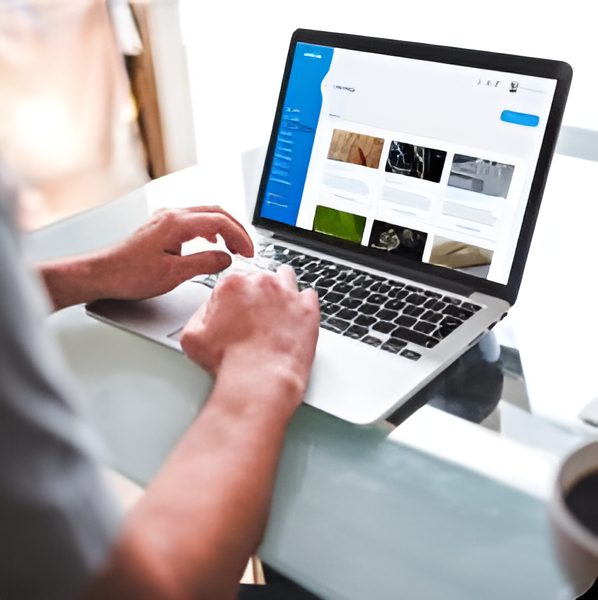Since the last year, we have met many new concepts, and we have been questioning the concepts we already know. Distance education for the education sector, or in other words, e-learning/online education, is at the top of the list among these concepts.
Everyone has used online video chat and meeting platforms. Formal education and face-to-face classes were conducted digitally, in some way or other. So, how could it be better? What should be kept in mind in order to make online lessons more efficient?
Let’s take a look at 10 tips for effective distance education:
Get yourself ready.
Establishing and maintaining order in distance education can be more challenging than face-to-face education. For this, you should prepare a distance education curriculum for each course. You need to create a clear structure and share it with the students. By doing so, they can come to class prepared, knowing what to expect.
You also need to have a technical background. It is important for you to learn how to use digital technologies. You now have your screen and digital equipment instead of your blackboard, desk, and other tools of lecture.
The more you master them, the more efficient your lecture will be. It may be useful to conduct a “rehearsal lecture” and exchange ideas with online educators like you.
Create a stable digital “classroom” environment
According to a study on distance education, students consider not only the moment of the online course but also all interactions with the teacher and the course (correspondence, announcements, assignments, course structure) as a whole online learning experience.
Thus, it is beneficial to organize all lectures, exams and assignments in one place, using as few platforms as possible. In the structure of the physical education environment, everything is systematically interconnected. It allows students to pay attention to the lectures without thinking about the details.
To provide the same structure in distance education, you can use systems such as Vedubox. It offers the necessary features in distance education in an integrated way and even gathers the infrastructures of applications such as Zoom and Microsoft Teams in one place.
Discover digital assessment-evaluation methods
Assessment and evaluation activities are the important issues of distance education that confuses us.
- How the exams should be done?
- Should they be multiple-choice?
- How to put written or asynchronously written assignments into practice?
- How should it be checked that there is no violation of ethics and security?
- How should it be evaluated?
Establishing a stable and regular assessment-evaluation system is extremely vital for students’ performance. Fortunately, there are technological opportunities that help us in this regard.
With Vedubox’s question bank which you can use in online exams, you can
- create questions in the format you want (drag and drop, multiple-choice, matching, true-false, written, etc.) and
- use the items you want (text, visual, video, audio), you can apply and evaluate the exam from a single place.
Include them in decision-making processes
Distance education naturally does not have the range of movement and active participation opportunities provided by physical education. When it’s not engaging, it can be demotivating, especially for younger students. Try to include them in the decisions about the lecture structure and process of the course. In this way, they can adopt the order you will create and feel a sense of belonging.
For instance, in the first lecture, you can ask them to create a list of “class rules”. They can share their expectations and what they would be uncomfortable with within the online classes, and consider alternative teaching methods according to the class dynamics and demands. You can encourage their motivation by offering a few options and showing flexibility in assignments and allowing them to progress in line with their own choices.
Create opportunities to socialize outside of the class
For a safe learning environment, it is important for the group to socialize with each other and feel comfortable. Socialization with peers is an essential part of education and personal development, especially for students in childhood and adolescence. Sociality among peers is necessary for the development of self-sense, self-confidence, empathy and various cognitive, emotional and social skills. So how can you achieve this in distance education?
Kailyn, a primary school second-grade teacher, finds the “digital break” practice. She leaves Zoom on in the 20-minute breaks between lessons, helpful: “This created a time period where children can play freely, similar to the breaks at school. They brought their toys, made up stories together, talked about their day, joked and had snack together.”
Make room for games
Regardless of age, bringing game dynamics to all areas of life at the right place and time increases people’s motivation and mood, thus positively affecting the learning experience.
The recently popularized game technique, also known as “Gamification”, is simply incorporating game dynamics and rules (reward system, storytelling, etc.) into contexts outside the game. There are various studies that show that gamification has a positive effect on students’ participation when used in lectures. For detailed information on how to use gamification in distance education, you can take a look at this article.
Encourage effective (active) learning
Effective learning strategies are “all educational activities that require students to do something and think about what they are doing”, as Bonwell and Eison used the term for the first time in 1991. They are a substantial part of modern education. In distance education, you should make room for activities that will remove the students from the passive position in the lectures. You need to support them for movement areas because they have to stay in front of the camera.
Of course, we are not talking about physical activity in the full sense. We mean the activities which will require their active engagement with the course content such as
- watching videos,
- following the projected presentation,
- participating in discussions about the content,
- taking notes in a common file on a platform such as Google Docs or Vedubox,
- participating in live surveys.
You can get more ideas by checking out the Columbia University Center for Education and Training article “Active learning strategies for the Zoom platform.”
Create a regular feedback system
It is difficult to read gestures from the screen compared to face-to-face lectures. This can create confusion and communication difficulties with students. Have systems that allow especially shy students to express themselves and to give feedback both during and after the classroom for keeping the class in order.
For example, at the beginning or end of the lecture, you can ask them to briefly write a sentence about their mood in the chat section of Zoom. Or they can express their needs and demands with certain emojis during the lecture.
You can even create a classroom language by assigning special meanings to certain emojis among yourselves. Alternatively, you ask your students to write a small paragraph about the lectures each week. An then, you can want them to hand it in at the end of the semester, thus having them keep a regular “learning diary”.
Create opportunities for peer teaching
Professor David Boud, founding director of the Deakin University Assessment and Digital Learning Research Center, defines peer teaching as “the transition from independent learning to interconnected or collective learning.” In other words, it can be stated as students interacting with the course content in a collaborative way.
Many educators prefer this method in terms of both creating a sense of responsibility in students and making it easier for them to remember what they have learned. You should definitely create collaborative learning opportunities to “attract” students to the lecture, especially when you are away from the physical classroom environment. There are many ways to do this, such as group assignments and projects, evaluating each other’s assignments, creating discussion groups. Zoom’s breakout rooms feature can be especially useful in crowded classrooms.
Always have a plan B (even C, D, E…)
Perhaps the most obvious but most essential point is to be prepared for any technical problems that may arise. We have emphasized the importance of being thoroughly familiar with technological possibilities at the beginning, but let us remind it again. Learn how to use different alternatives beforehand and try to supply your equipment (microphone, camera, internet range extender, etc.) if you need it.
During the education period, you or your students may experience various problems with their internet access and the devices they use. For these situations, you can take measures such as
- different communication channels,
- alternative homework and activities to make up for missed lessons,
- make-up exam formats, and
- arranging multiple supervisors for exams.
Whatever strategy you choose, be sure to go over it with your students and inform them about the alternatives. Keep your lecture plans as flexible as possible.
Distance education is a new and unusual concept for most of us, but it will continue to be in our lives in the future. We hope our tips will help you plan your online lectures.
You can also visit our related article for more information about the hybrid education model.








